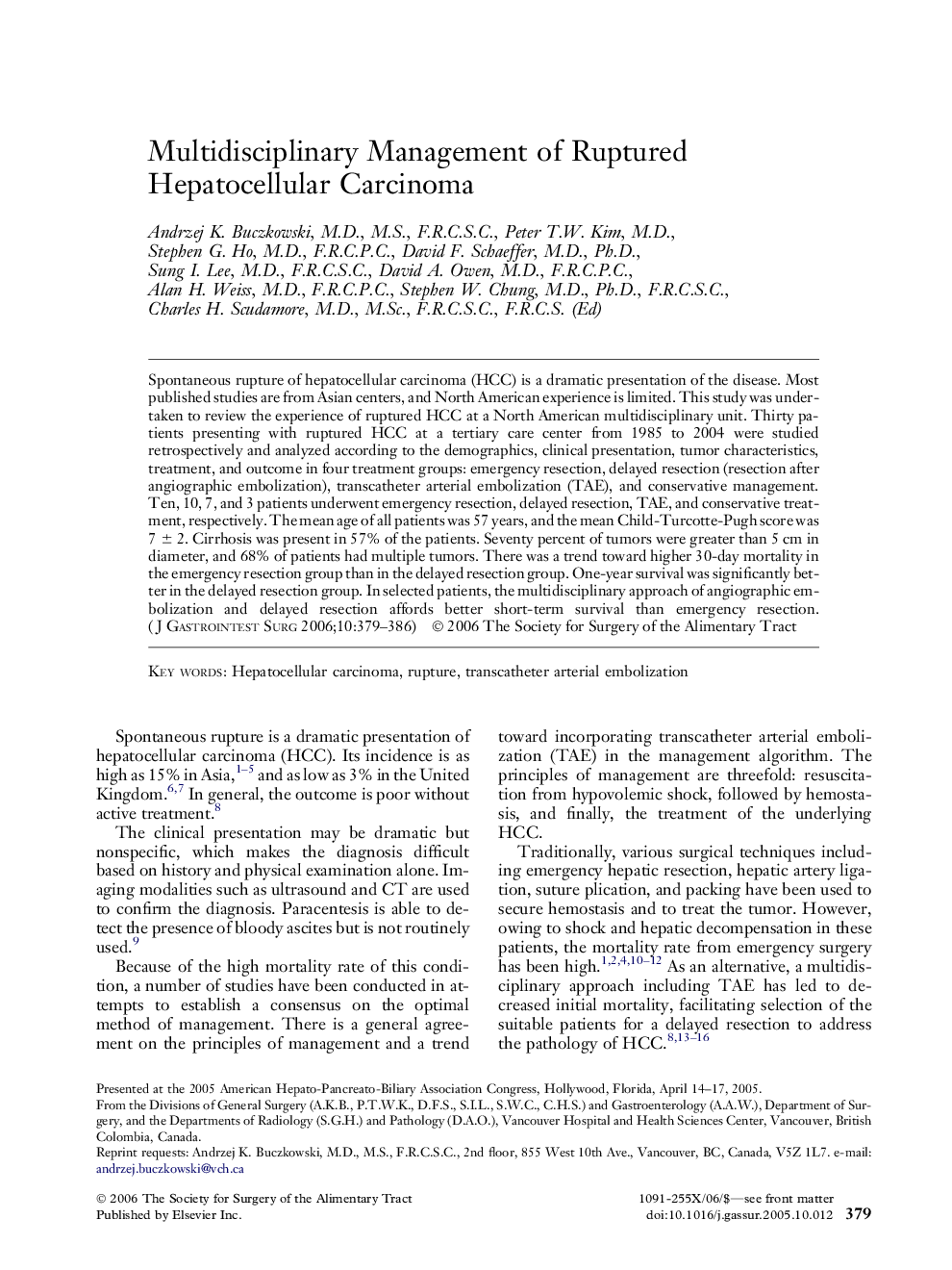| Article ID | Journal | Published Year | Pages | File Type |
|---|---|---|---|---|
| 4297340 | Journal of Gastrointestinal Surgery | 2006 | 8 Pages |
Abstract
Spontaneous rupture of hepatocellular carcinoma (HCC) is a dramatic presentation of the disease. Most published studies are from Asian centers, and North American experience is limited. This study was undertaken to review the experience of ruptured HCC at a North American multidisciplinary unit. Thirty patients presenting with ruptured HCC at a tertiary care center from 1985 to 2004 were studied retrospectively and analyzed according to the demographics, clinical presentation, tumor characteristics, treatment, and outcome in four treatment groups: emergency resection, delayed resection (resection after angiographic embolization), transcatheter arterial embolization (TAE), and conservative management. Ten, 10, 7, and 3 patients underwent emergency resection, delayed resection, TAE, and conservative treatment, respectively. The mean age of all patients was 57 years, and the mean Child-Turcotte-Pugh score was 7 ± 2. Cirrhosis was present in 57% of the patients. Seventy percent of tumors were greater than 5 cm in diameter, and 68% of patients had multiple tumors. There was a trend toward higher 30-day mortality in the emergency resection group than in the delayed resection group. One-year survival was significantly better in the delayed resection group. In selected patients, the multidisciplinary approach of angiographic embolization and delayed resection affords better short-term survival than emergency resection.
Related Topics
Health Sciences
Medicine and Dentistry
Surgery
Authors
Andrzej K. M.D., M.S., F.R.C.S.C., Peter T.W. M.D., Stephen G. M.D., F.R.C.P.C., David F. M.D., Ph.D., Sung I. M.D., F.R.C.S.C., David A. M.D., F.R.C.P.C., Alan H. M.D., F.R.C.P.C., Stephen W. M.D., Ph.D., F.R.C.S.C., Charles H. M.D., M.Sc., F.R.C.S.C.,
